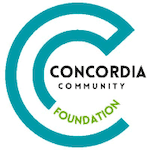Creutzfeldt-Jakob Disease Treatment in Oklahoma City
Creutzfeldt-Jakob disease (also known as CJD or the human version of mad cow disease), is an incredibly rare and degenerative brain disorder. Affecting only 1 in a million yearly throughout the world, approximately 300 cases are diagnosed in the United States in a year. Unfortunately, CJD is a fatal brain disease and typically runs a fast course. 90% of individuals diagnosed with CJD live less than 1 year. Though CJD is not an easy diagnosis to receive (or to watch a family member receive), there are resources and information to ease the burden and eliminate the unknowns.
About Creutzfeldt-Jakob Disease
Creutzfeldt-Jakob (CJD) is a degenerative disorder in the brain that results in dementia and, ultimately, death. CJD looks very similar to other forms of dementia (including the most common, Alzheimer’s), but progresses much faster in the patient.
Symptoms of Creutzfeldt-Jakob Disease
CJD is a rare brain disorder diagnosed in older adults. As such, older adults often experience memory slips or moments of confusion (or even personality changes) that are not anything over which to worry. Frequent expression of certain symptoms, however, should raise a red flag and result in a conversation with the family doctor. The most easily recognizable symptom that someone may have CJD is rapid symptom progression. Additionally, other symptoms include (but are not limited to) the following:
- Persistent anxiety or depression
- Blurred vision or sudden blindness
- Frequent insomnia
- Difficulty swallowing
- Sudden and jerky movements and muscle stiffness
Brain or Physical Changes
Creutzfeldt-Jakob disease changes healthy brain tissue into abnormal or diseased tissue by causing many sponge-like lesions throughout the brain. As normal prion protein alters its structural and physical shape, the abnormal prion protein damages the brain, causing cell death, brain damage, and disease.
Causes and/or Risk Factors
Many scientists believe CJD begins when a prion protein located in the brain mis-folds and triggers a domino effect of mis-folding protein within the brain.
There are 3 known types of Creutzfeldt-Jakob disease:
- Sporadic: Unfortunately, this type of CJD currently has no known cause or specific risk factors identified by researchers.
- Familial: This type of CJD is genetic and is believed to be due to a defect within the prion protein gene.
- Acquired: This type of CJD is acquired when a person is exposed to an infectious prion in contaminated meat, in contaminated tissue (such as in a transplant), or from instruments during surgery.
Diagnosis, Treatment, and Care of Creutzfeldt-Jakob Disease
CJD – as is the case with any form of dementia – is a difficult diagnosis. However, it’s paramount that a proper diagnosis be received as quickly as possible so that ensuing treatment and proper care can be promptly administered, i.e. to be moved from independent living to a memory care program.
Specifically, Creutzfeldt-Jakob disease is a fast-moving brain disorder, so it is critical that an individual receive a proper diagnosis as quickly as possible so that professionals can do whatever is possible to delay the onset of new or worsening symptoms, and, specifically in this case, prolong life.
Though no one single test is used to conclusively diagnose a person with CJD, several tests in combination help doctors with a diagnosis. These tests include an electroencephalogram (EEG) to check the heart, brain magnetic resonance imaging (MRI) to check the brain, and lumbar puncture (also known as a spinal tap) to test fluid for the presence of specific proteins.


